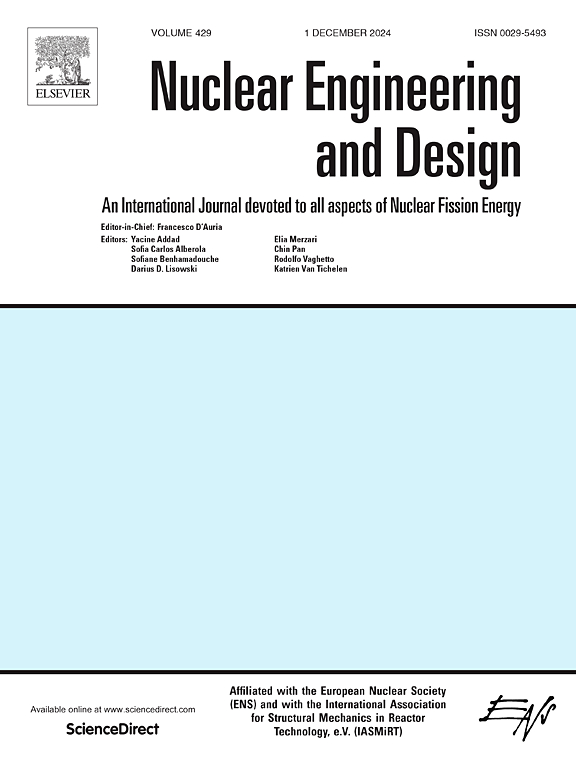Modal seismic analysis of reactor internals considering the initial stress at normal operating conditions: A study on Atucha-I NPP control rods
IF 1.9
3区 工程技术
Q1 NUCLEAR SCIENCE & TECHNOLOGY
引用次数: 0
Abstract
Modal seismic analysis evaluates the seismic response of nuclear plants by combining dominant vibration modes under a prescribed pseudo-acceleration spectrum. Such analyses typically consider only the thermal and kinematic boundary conditions for normal operation, but initial stresses in this state significantly affect vibration modes and modal seismic response. Simply considering all boundary conditions is insufficient to account for initial stresses; a prior thermo-mechanical analysis is mandatory to compute the geometric stiffness and redistribution of internal forces under initial stresses. This study investigates the modal seismic response of the guide tubes and control rods of the Atucha-1 Pressurized Heavy Water Reactor, comparing configurations with and without initial stresses, given their oblique arrangement makes them susceptible to developing such initial stresses. Boundary conditions were provided by Nucleoeléctrica Argentina S.A. (NA-SA) and the 3-D finite element model was built and analyzed with the open-source suite SalomeMeca v2022. Results indicate that initial stresses alter the effective stiffness of the piece by redistributing internal forces, increasing the natural frequencies by about 50%, shifting away from the seismic excitation frequency range. This reduces the modal seismic displacement by one order of magnitude, leading to more realistic responses that may extend operational limits within safety margins.
求助全文
约1分钟内获得全文
求助全文
来源期刊

Nuclear Engineering and Design
工程技术-核科学技术
CiteScore
3.40
自引率
11.80%
发文量
377
审稿时长
5 months
期刊介绍:
Nuclear Engineering and Design covers the wide range of disciplines involved in the engineering, design, safety and construction of nuclear fission reactors. The Editors welcome papers both on applied and innovative aspects and developments in nuclear science and technology.
Fundamentals of Reactor Design include:
• Thermal-Hydraulics and Core Physics
• Safety Analysis, Risk Assessment (PSA)
• Structural and Mechanical Engineering
• Materials Science
• Fuel Behavior and Design
• Structural Plant Design
• Engineering of Reactor Components
• Experiments
Aspects beyond fundamentals of Reactor Design covered:
• Accident Mitigation Measures
• Reactor Control Systems
• Licensing Issues
• Safeguard Engineering
• Economy of Plants
• Reprocessing / Waste Disposal
• Applications of Nuclear Energy
• Maintenance
• Decommissioning
Papers on new reactor ideas and developments (Generation IV reactors) such as inherently safe modular HTRs, High Performance LWRs/HWRs and LMFBs/GFR will be considered; Actinide Burners, Accelerator Driven Systems, Energy Amplifiers and other special designs of power and research reactors and their applications are also encouraged.
 求助内容:
求助内容: 应助结果提醒方式:
应助结果提醒方式:


